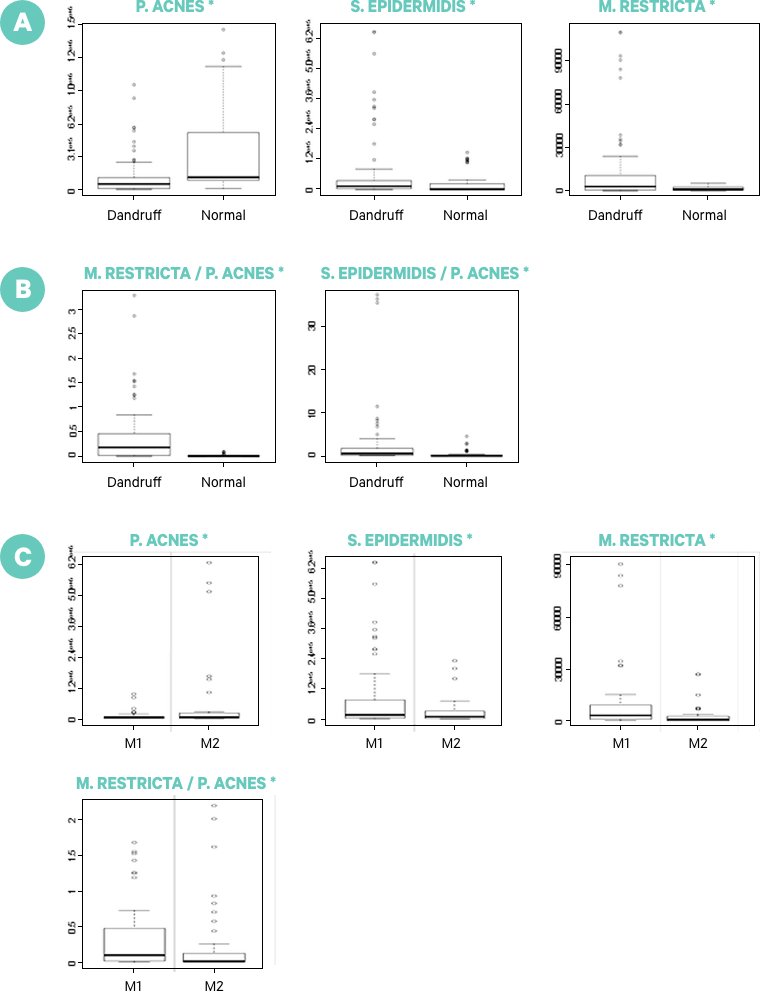L'Oréal Dermatological Beauty es una comunidad digital que permite a los profesionales de la salud mejorar su práctica diaria de la dermatología a través de la investigación de vanguardia, la ciencia y la educación sobre el cuidado de la piel y el cabello.
Dandruff is associated with an unbalance of the major bacterial and fungal populations colonizing the scalp
- 10min
- May. 2022
- Supported by

In brief
Dandruff, a scalp disorder characterized by an abnormal flaking of the scalp, might be due to the increased proliferation of fungi such as Malassezia restricta: This article reports that dandruff is associated with changes in not only Malassezia spp. but also in the proportion between fungal and bacterial populations. These observations on a wide variety of scalp microbial contaminants should be useful for the development of new anti-dandruff strategies that can address the scalp microbial ecology.
Introduction
Dandruff is a scalp disorder occurring in up to 50% of the population and is characterized by an abnormal flaking of the scalp, related to mild inflammatory reaction. Dandruff results from disrupted cohesion between the corneocytes and cell hyperproliferation leading to stratum corneum alteration. Dandruff might be due to the presence of fungi: Malassezia restricta, Malassezia globose or Filobasidium floriforme. No association has been made so far between dandruff, fungi and bacterial populations on the human scalp. In this article, Clavaud et al. report that dandruff is significantly associated with a higher amount of both M. restricta and Staphylococcus epidermidis and a lower amount of Propionibacterium acnes compared to a control population.
Major Species Found on Scalps with or without Dandruff
Culture-independent methodologies, cloning and sequencing techniques performed on samples of 10 normal individuals and 9 dandruff individuals revealed that Propionibacterium and Staphylococcus were the two major bacterial species found in the scalp independently of the presence of dandruff. Malassezia restricta was the major fungal species present on the scalp with or without dandruff. Interestingly, dandruff was associated with changes in the proportion between fungal and bacterial populations. Dandruff was associated with an increase of ratio M. restricta / Propionibacterium. acnes and an increase of ratio Staphylococcus epidermidis/ Propionibacterium. Acnes (Figure 1).

Figure 1. Quantification of the three major microbial species found on the scalp surface by Q-PCR. Box plots comparing the density of P. acnes, S. epidermidis and M. restricta found on the scalp surface (in number of cells per cm2 of the scalp surface detected by Q-PCR) - (A) Variations of the microbial populations between nineteen subjects from Set-1 and thirty subjects from Set-2 accounting for a total of 29 individuals with dandruff and 20 controls without dandruff; (B) Ratios M. restricta/P. acnes and S. epidermidis/P. acnes in dandruff scalps and in non-dandruff scalps and (C) Intra-individual variations of the microbial populations within the 20 dandruff volunteers of Set-2. Box plots comparing the density of P. acnes, S. epidermidis and M. restricta quantified by Q-PCR on areas M1 (dandruff area) and M2 (non-dandruff area). Asterisk indicates a significant statistical difference (p<0.01).
Conclusion
Dandruff is not only associated with a higher incidence of one specific Malassezia species but also to differences in the balance between the fungal and bacterial populations on the scalp. These findings indicate a higher propensity for the scalp of dandruff subjects to be colonized by a wide variety of scalp microbial contaminants. These observations should be useful for the development of new anti-dandruff strategies. Indeed, the dandruff situation of the scalp may improve thanks to a modification of the scalp microbial ecology, with either chemicals or with changes in the skin physiology.
Reference: Clavaud C et al. Dandruff Is Associated with Disequilibrium in the Proportion of the Major Bacterial and Fungal Populations Colonizing the Scalp. PLoS One. 2013;8(3):e58203.